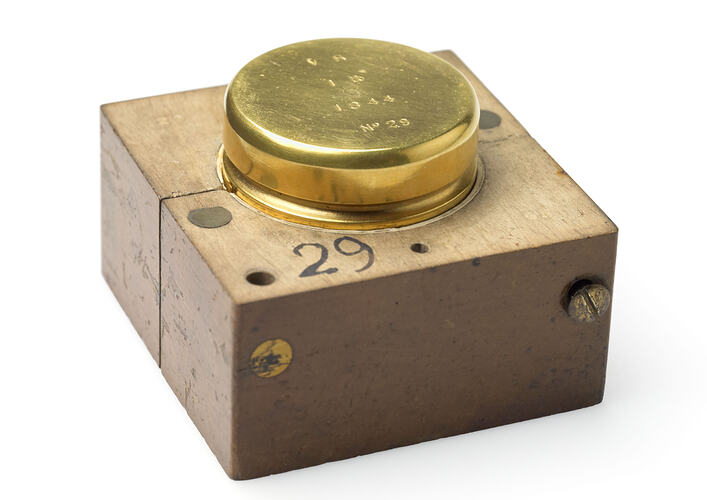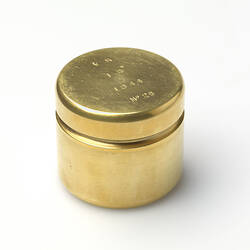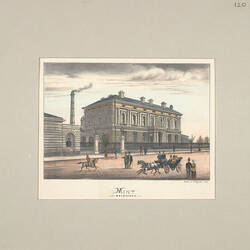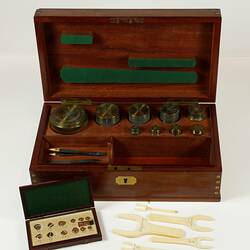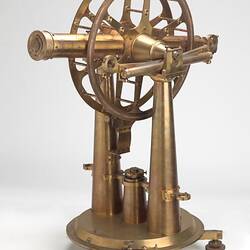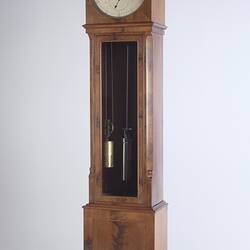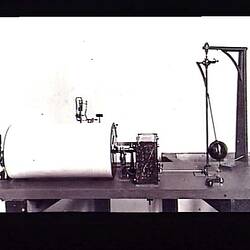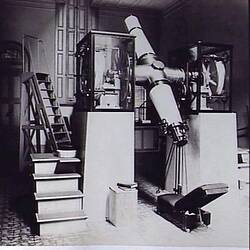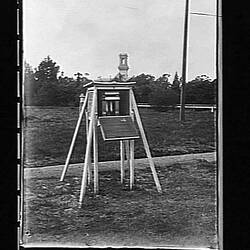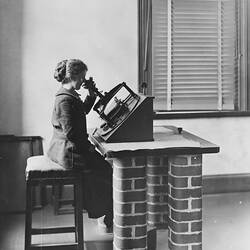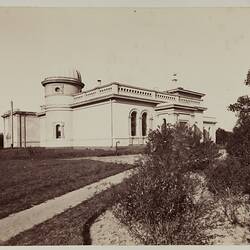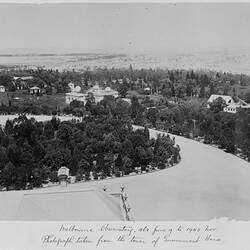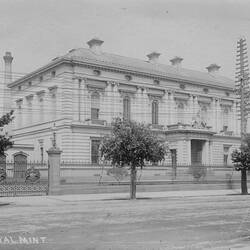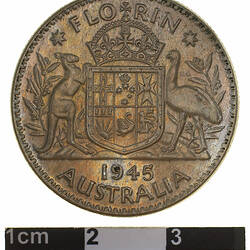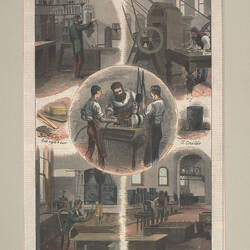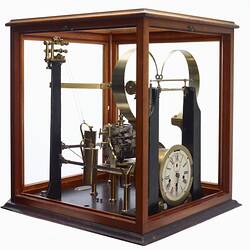Summary
Standard Troy pound, Parliamentary Copy of the British Standard Pound, no. 29, 1844. Used as a primary standard for the Colony of Victoria.
The standard pound was placed in the custody of Government Astronomer, Robert Ellery, in 1860.
1 troy pound is approximately 373g.
Significance
From its inception the Melbourne Observatory had sets of standard weights and measures, which had been tested in Britain against the Imperial standards. These included the primary standard yard and pound for the Colony of Victoria. Other standards of weight and measure in the colony could be compared to these primary standards.
The British Imperial Standards of 1824 had three measures of weight: troy weight, used for precious metals, avoirdupois weight, used for other purposes, and apothecaries' weight. The troy pound was the primary standard. The troy pound was replaced as the standard by the avoirdupois pound in 1879, and the troy system only used for weights of an ounce or less.
The British Imperial Standards were introduced in 1824, to systematise the varying standards that had been used previously. Unfortunately these standards were destroyed when the British Houses of Parliament burned down in 1834, and new standards had to be established.
Authorised Parliamentary Copies of the British Standard Troy Pound were made in 1844 and distributed to major cities in the United Kingdom and the British colonies. This standard Troy Pound is Parliamentary Copy No 29, made in 1844, and sent to Melbourne. The standard was initially held by the Customs Department, then transferred to Robert Ellery, Government Astronomer in 1860.
This Troy Pound standard was lent for a time to the Melbourne Branch of the Royal Mint in 1875, to test its own standards of weight, essential in the making of coins.
More Information
-
Collection Names
Melbourne Observatory Collection, Weights and Measures Collection
-
Collecting Areas
-
Acquisition Information
Transfer from Office of Trade Measurement (formerly Weights & Measures Branch), Victoria: Local Government Department, 28 Sep 1994
-
User
Victoria: Customs & Excise Department, Flinders Street, Melbourne, Greater Melbourne, Victoria, Australia, 1844-1860
-
User
Melbourne Observatory, South Yarra, Greater Melbourne, Victoria, Australia, 1860-1944
-
User
Royal Mint, Melbourne Branch, William Street, Melbourne, Greater Melbourne, Victoria, Australia, 1875
-
Inscriptions
Stamped on top of weight: 'VR 1844 1 tb No 29'.
-
Classification
-
Category
-
Discipline
-
Type of item
-
Overall Dimensions
7 cm (Length), 7 cm (Width), 6 cm (Height)
-
Keywords
